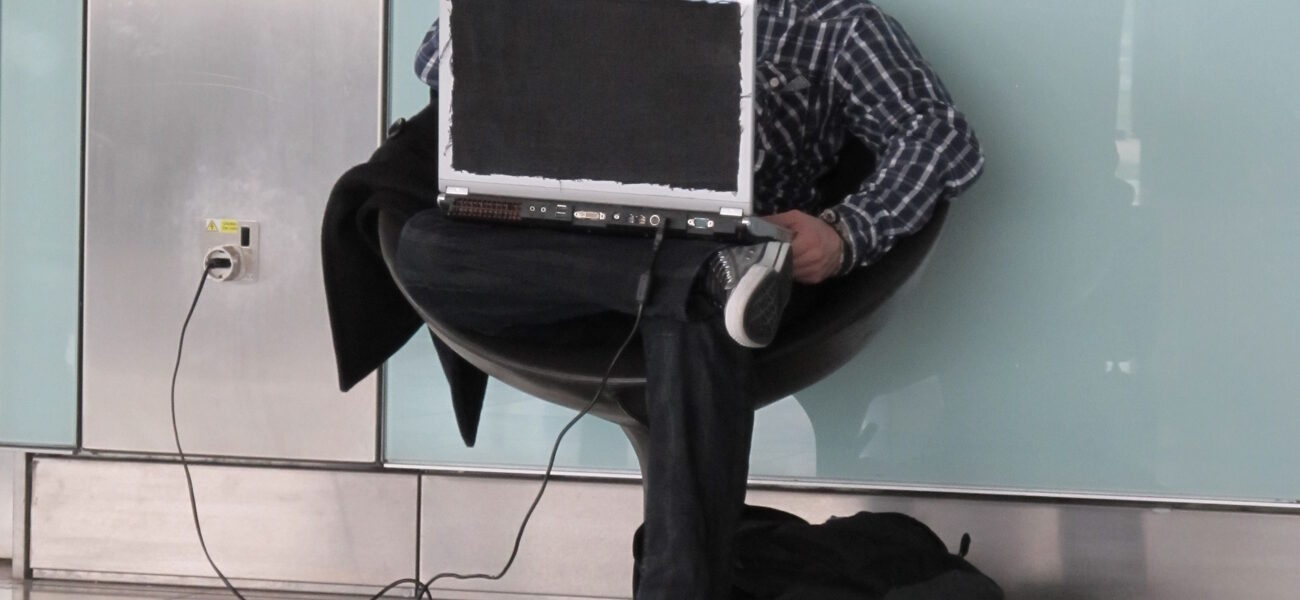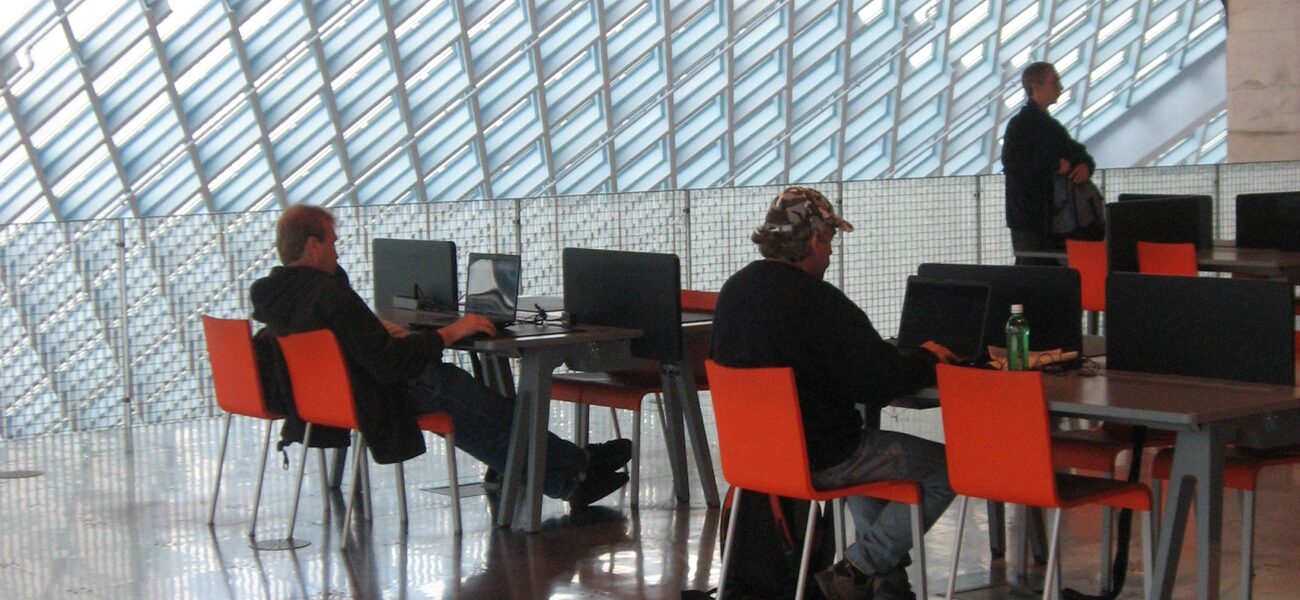The average lifespan of a building is 60 years, but the forces that drive the workplace may change as often as every six months. The challenge, whether for new construction or renovation, is to design a workplace that will adapt to a fluctuating timetable of changes in technology, business goals, and the workforce. The keys to success are a flexible workplace and a strong change management process.
Workforce transitions—people moving in and out of a company—occur every five years on average. Business transitions—introducing new processes, modes of working, or management policies—may occur every three years. Technology can change as rapidly as every six months. With such varying timeframes, it can be difficult to future-proof the physical workplace.
“Think about the implications of change in how you deal with space. We really need to be looking at a process, an evolution of your building, rather than a revolution,” says John Campbell, principal with Francis Cauffman. “How do we create a space for work when we have such different cycles?”
Managing Change
The average length of a lease for business space is five to 10 years.
“You design a building to meet current needs, but you need to plan ahead. If we change the workplace only once every 10 years, this impacts the relevance of the space,” says Campbell. “When you go in with a new workplace design, you are ahead of the game. Within five years, you are starting to be out of it. In 10 years, when you are thinking of moving or renewing the lease, everything is moved up a notch. The degree of change is huge at that point. It requires a robust change management program to align the work environment with the changes in business needs and processes, opportunities for mobility, technology, and culture.”
Any viable change management program should incorporate client discussions about corporate culture, preferred work styles, and goals for the company. One good method is taking a “day-in-the-life” look at what happens in the space on an average day. For instance, on a redesign project for McNeil Nutritionals, Campbell’s firm used input from staff and management to create an open-plan, activity-based, mobile office environment, rather than the traditional setup with offices for senior management and cubicles for everyone else. Regardless of seniority or title, everyone was given the same space. The furniture and technology was configured so employees moved themselves to accommodate changing departmental needs, collaborate with other groups, or work from home or a satellite office. The resulting environment better reflected McNeil’s image as a dynamic, rapidly-growing company, allowed easy collaboration between cross-functional groups, and could adapt to rapidly changing business needs.
“None of us knows what we will be doing in 10 years, but we can do our best to create a work environment that is agile enough to let a company make a major shift in its business focus without having to refit the space,” says Campbell.
Perception vs. Reality
Regardless of how many hours people work each week, most people think they spend more time in the office than they actually do. In fact, says Campbell, the typical office is occupied less than 50 percent of the time. This creates a real opportunity to reduce real estate and operating costs.
“Ten years ago people had a PC and a desk. They were tethered to their desk. With laptops and tablet computers, people don’t work like that now,” he says.
Time utilization studies are a very useful metric to determine the efficiency and effectiveness of a workspace. In these studies, the design team walks through a space at predetermined intervals throughout a day—say every half hour—observes, and notes on a checklist how the space is being used and how many people are present, among other things. While time consuming—they typically take more than a week or two to complete—these studies quantify how space is actually being used, identify roadblocks to efficiency, and reveal the difference between perception and reality when it comes to work.
In one case, employees complained their office lacked conference space. A time utilization study revealed that existing conference rooms were unoccupied 43 percent of the time. The problem had more to do with inefficiency in the system for booking the conference space, and the entrenched belief among staff that the conference space was limited. Therefore, people booked space far in advance, then didn’t show up for the meeting. The time utilization study also revealed that most meetings included only four or five people at most. In the redesign, rather than adding more large-scale conference rooms, the company created several smaller “huddle” rooms.
In addition to dispelling misperceptions and addressing deficiencies, an effective workplace accommodation strategy must account for the fact that people who spend a lot of time at work need to feel good about being there. According to Gallup research, employees fall into one of three categories: engaged (actively interested in the work), not engaged (would leave if the opportunity arose) and actively disengaged (disenchanted with their workplace). Low productivity, absenteeism, and high employee turnover associated with actively disengaged employees is estimated to cost $300 billion per year. To combat this trend, Campbell recommends a shift toward what he calls “results oriented work environment” (ROWE).
“The nature of work as we know it has changed completely. We are seeing a move to a results oriented work environment where what you do and how you do it, related to defined performance goals, is much more important than whether I can see you in the office or not,” says Campbell.
“The primary purpose of a workplace is to support an organization’s mission,” says Campbell. “We talk about productivity, but I think one of the key factors of productivity is whether you can increase people’s engagement in their company. If they are more passionate about what they do, you are automatically going to get higher productivity.”
Modes of Work: Third Spaces and Unassigned Spaces
As employees are able to work anytime, anywhere, the role of the office will naturally shift from a place to do work to a place to collaborate, mentor, and engage with others.
“If I can work virtually, why come in? Work becomes less about you and your personal space and more about engaging and collaborating with others,” says Campbell.
He describes five modes of work, which all have relevance for workplace design:
- Resident—There is a fixed location to complete the work, such as a call center or retail store.
- Telework—The work comes to you, it’s person-dependent not place-dependent.
- Mobility—You go where the work is, for instance to a client’s office.
- Co-working—A neutral place to connect with others, for instance a coffee shop or group office.
- Distributed work—Geographically dispersed, virtual teams may be worldwide working on one project.
Increasingly, offices are shifting to unassigned or transitional space. Unassigned space creates a fluid environment. Employees can sit with whomever is relevant to their work on any given day. On a project designed for GSK, there are no offices and no assigned desks, which better aligns with the company’s “smart work” culture. In addition, with a number of mobile employees, GSK provided desks for only 1,030 of the 1,300 employees assigned to this facility. This is supplemented with a variety of both enclosed and informal meeting spaces, including the cafeteria, which is set up as a “destination” for informal meetings, such that if, on a rare day all 1,300 employees showed up, there is more than ample space to accommodate them.
As workplace configurations become more open and collaborative, design strategies will need to address what Campbell calls “the ping factor”—the constant interruption of email, instant messaging, texting, or just general office noise and conversation. Managing distractions is a rising concern but can be mitigated by creating a variety of work settings for different modes of work and work styles and discussion of appropriate office etiquette.
“In a change management process, we have users engaged in the design process from the beginning. We do a lot of exercises where people can model the space and feel that they have had a say. In the new spaces, people need to talk about what is the working etiquette, which may not be what they had before,” says Campbell. “Gone are the days of the universal solution. It’s about creating a work environment consisting of different work settings and agreeing on the type of behavior you want in this space, which impacts the type of furniture will you use. For some clients we have designed certain areas as the “quiet car.”
While the work environment is a relatively small component of employee satisfaction and business success, it does matter.
“You can have people doing great work in a terrible space, but if you provide an inspiring space you will increase the level of engagement,” says Campbell.
Addressing space strategies should merit the same attention and time up front as a business plan: “What is your workplace accommodation strategy? What are you trying to achieve and how can you create the right type of work environment to tie in with your business drivers and company culture? Think of space as a strategic business tool.”
By Mary Beth Rohde
This article is based on a presentation Campbell gave at the Tradeline 2012 Space Strategies conference.

